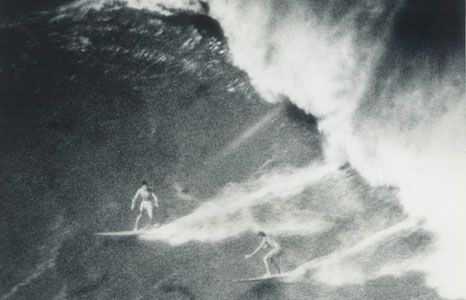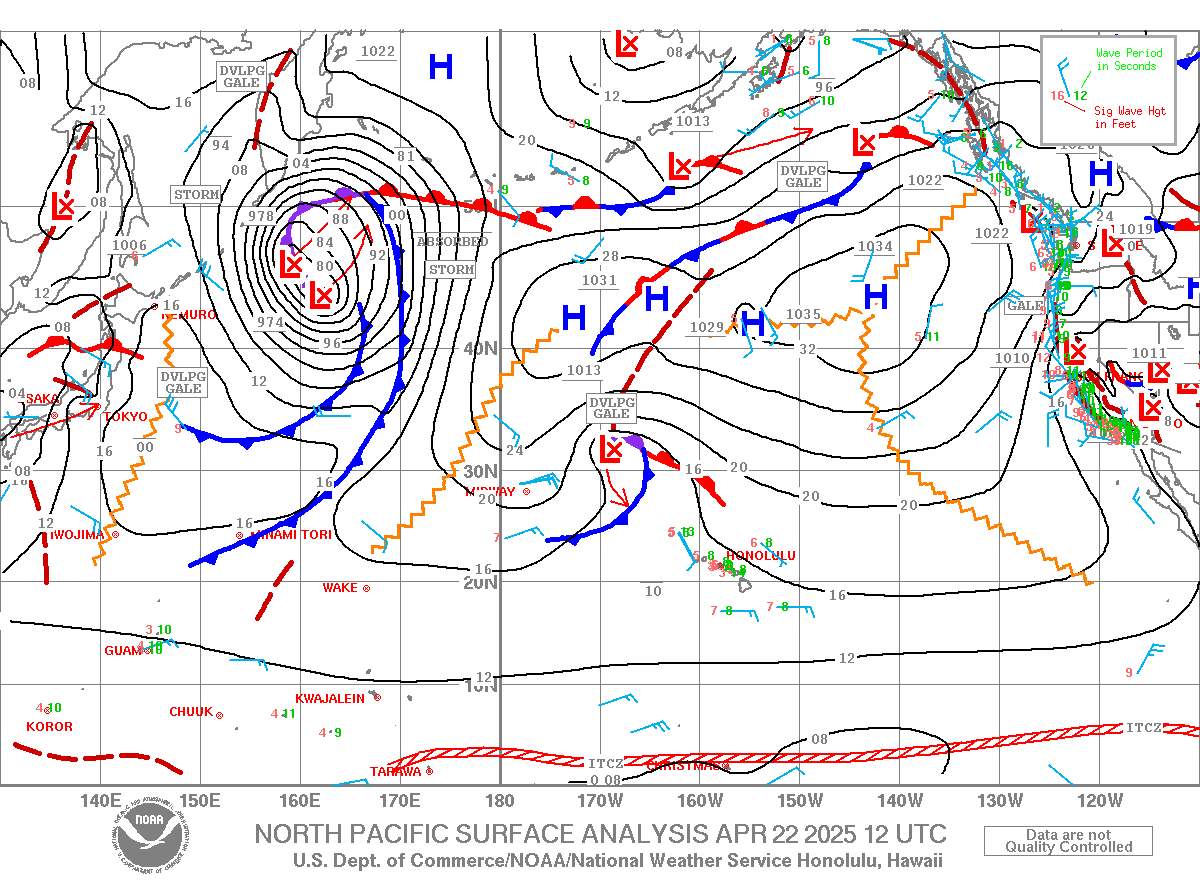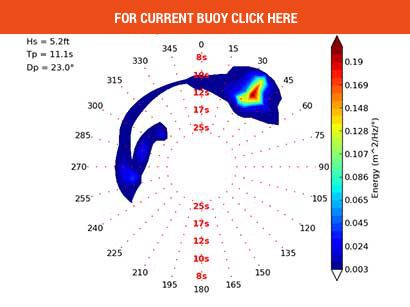
It’s been an epic month and we’re getting sad that we don’t have this line up of surf films more often…we’ve been spoiled all month thanks to the Honolulu Museum of Art and the Doris Duke Theater.
UPDATE: This event is sold out.
Surfing the Fifties
Directed by Bud Browne. USA. 1994. 58 min.
Bud Browne’s last surf film is composed of what he believed to be the finest of his earliest work. Poignantly narrated by John Kelly, Surfing the Fifties is a historical survey, going from the Hawaiian beginnings of surfing to the birth of modern big wave surfing, featuring pioneers such as George Downing, Buzzy Trent, and Buffalo Keaulana. Also in the film is iconic footage of the North and South Shores of O‘ahu with legendary surfers like Peter Cole, Donald Takayama, Kimo Hollinger, Woody Browne, Greg Noll, and Ricky Grigg. Includes rare footage of Duke Kahanamoku with Peter Cole and John Kelly recording the narration. Public screenings of Bud Browne’s films are rare, and the Bud Browne Films Archives is proud to screen a film at the Honolulu Surf Film Festival for the seventh year.
Closing night: July 31, 6-7:30pm: We close the festival with live music from Men in Grey Suits and pūpū from Mahina & Sun’s—and a tribute to Hawai‘i’s North Shore big-wave surf pioneer Peter Cole. Drinks will be available for purchase. In the talk-story lineup on stage will be Clyde Aikau, Kohl Christensen, Mark Cunningham, Darrick Doerner, Kimo Hollinger, Randy Rarick, and Jock Sutherland. A short film on Peter Cole will be shown before the presentation of the feature film of the night, Surfing the Fifties, at 7:30pm. $25 | $20 museum members.
Peter Cole
The Honolulu Surf Film Festival pays tribute to Peter Cole, the bright, gracious, persevering big-wave surfer from the North Shore. The winner of the 1958 Makaha International contest, Cole was one of the original California-born surfers who helped shape big-wave riding in the late 1950s and early ’60s.
“He’d wait with the patience of Job for the biggest wave of the day,” fellow California transplant Rick Grigg said. “And when it came he usually caught it.” Cole was born in 1930 in Los Angeles, the son of a stockbroker, and raised in Highland Park and San Marino. He began surfing at age 14 when he moved with his family to Santa Monica. He graduated in 1953 with a B.A. in fine arts from Stanford University, where he played water polo and was a nationally ranked middle-distance freestyle swimmer. While at Stanford he often drove to nearby Santa Cruz to ride Steamer Lane, developing a taste for large waves.
Cole taught high school and served in the army, then moved to Honolulu in 1958 to teach math at Punahou School, and to test his mettle on the North Shore, which had recently eclipsed Makaha as the center of big-wave surfing. George Downing, Wally Froiseth, and a few other locals were riding the North Shore, but much of the groundbreaking work at places like Waimea Bay and Sunset Beach was being done by California-born surfers like Buzzy Trent, Pat Curren, Fred Van Dyke, and Greg Noll.
At six-foot-four, Cole was the tallest of the big-wave surfers, and perhaps the least nimble. But because of his tremendous swimming ability, along with an inborn calmness and an analytic mind that told him big-wave danger was overstated, he soon gained a reputation as one of the sport’s boldest riders. In 1972, however, Cole was struck by his surfboard and blinded in his right eye.
Cole received an M.S. in information sciences from the University of Hawai‘i in 1971. He had left Punahou School (where he’d taught Gerry Lopez and Jeff Hakman, among other well-known ’70s surfers), and was then working as an operations research analyst for the Navy Civil Service. Decades passed, and Cole continued to ride big waves on the North Shore, attributing his longevity in part to the fact that he had a rich life outside of surfing.
“Those of my generation who dedicated all their time to surfing aren’t in the lineup anymore. For a surfer to ride into old age, it’s important that surfing be nothing more than a recreational activity. It should never be a person’s entire life.” Although he won the 1958 Makaha International and rode in the 1965 Duke Kahanamoku Invitational, Cole generally took a dim view of surfing contests, saying that they worked against the main purpose of the sport, which is to have a good time. Cole rode Waimea for the last time in 1995 at age 65, but was still riding Sunset Beach—without a leash—into the mid 2000s.
“When Peter paddles out at Sunset,” Rick Grigg said in 1998, “everyone cheers.” Cole appeared in a half-dozen surf movies including Surf Safari (1959),Barefoot Adventure (1960), and Cavalcade of Surf (1962). He was also featured in Surfing for Life, a 1999 PBS-aired documentary about aging surfers. In the mid-60s, Cole wrote articles for Surf Guide magazine, mainly on big-wave riding. Cole was inducted into the Hawai‘i Waterman Hall of Fame in 2011.
Film:
Surfing the Fifties
Showtimes:
Sunday Jul 31 06:00 PM
Location:
Doris Duke Theatre





















